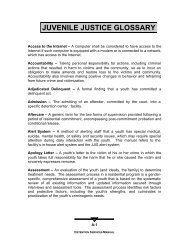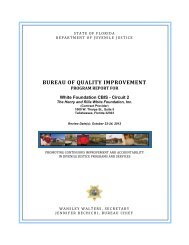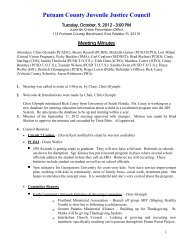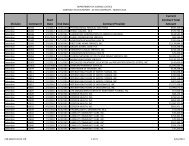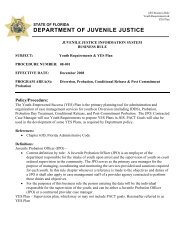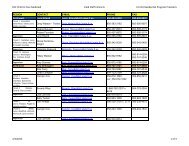Keep the Beat: Heart Healthy Recipes - National Heart, Lung, and ...
Keep the Beat: Heart Healthy Recipes - National Heart, Lung, and ...
Keep the Beat: Heart Healthy Recipes - National Heart, Lung, and ...
You also want an ePaper? Increase the reach of your titles
YUMPU automatically turns print PDFs into web optimized ePapers that Google loves.
●<br />
●<br />
But be careful of “lowfat” foods. They aren’t always low in<br />
calories. Sometimes, extra sugars are added to lowfat items,<br />
such as desserts. They can be just as high in calories as<br />
regular versions.<br />
Be physically active—if you are, you’ve got a good chance<br />
of keeping your calorie equation in balance.<br />
2. High Blood Pressure<br />
Also called hypertension, this condition puts you at risk for<br />
heart disease <strong>and</strong> stroke. Diet plays a big role in your chance of<br />
developing high blood pressure. Following an eating plan low in<br />
saturated fat <strong>and</strong> cholesterol, <strong>and</strong> moderate in total fat is important<br />
for heart health generally <strong>and</strong> may help prevent or control high<br />
blood pressure. A key ingredient of this plan should be reducing<br />
your intake of salt (sodium chloride) <strong>and</strong> o<strong>the</strong>r forms of sodium.<br />
Only small amounts of salt occur naturally in foods. Instead,<br />
most of <strong>the</strong> salt Americans consume is added during food processing,<br />
in preparation at home, or in a restaurant. By cutting back on<br />
salt, you’ll probably lessen your taste for it over time.<br />
Try to consume no more than 6 grams (about 1 teaspoon) of<br />
table salt a day. That equals 2.4 grams (2,400 milligrams) of sodium<br />
a day. Studies such as <strong>the</strong> Dietary Approaches to Stop Hypertension<br />
trial, or DASH, show that persons with or at an increased risk of<br />
developing high blood pressure can help control or prevent <strong>the</strong> condition<br />
by fur<strong>the</strong>r reducing table salt—to 4 grams (or 2 /3 teaspoon) a<br />
day. That equals 1.5 grams (1,500 milligrams) of sodium a day.<br />
Both totals include ALL salt <strong>and</strong> sodium consumed—that used in<br />
cooking <strong>and</strong> at <strong>the</strong> table, as well as in prepared foods.<br />
3. High Blood Cholesterol<br />
Fat <strong>and</strong> cholesterol in <strong>the</strong> diet can raise <strong>the</strong> level of cholesterol<br />
in <strong>the</strong> blood—<strong>and</strong> that can lead to a<strong>the</strong>rosclerosis, a type of “hardening<br />
of <strong>the</strong> arteries.” In a<strong>the</strong>rosclerosis, cholesterol, fat, <strong>and</strong> o<strong>the</strong>r<br />
4



